A Craft of the Ancients.
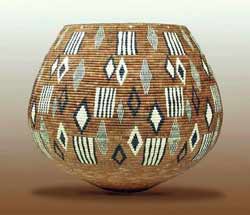 Basket making is a craft that may have been invented by prehistoric people. Articles made from stone (goods, wares, produce) by ancient people do not perish with time and have been discovered by archaeologists. Whereas, goods made of perishable materials deteriorate, vanish with time.. The survivability of goods made from perishable materials is significantly less than articles made of stone. That is why we will never know exactly when prehistoric people made the first basket in history.
Basket making is a craft that may have been invented by prehistoric people. Articles made from stone (goods, wares, produce) by ancient people do not perish with time and have been discovered by archaeologists. Whereas, goods made of perishable materials deteriorate, vanish with time.. The survivability of goods made from perishable materials is significantly less than articles made of stone. That is why we will never know exactly when prehistoric people made the first basket in history.
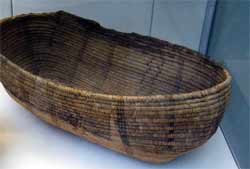 The oldest examples of ancient basketry dated to between 10,000 and 12,000 years old. Coiled baskets were discovered inside Egyptian pyramids. Some of them were made over seven thousands years ago.
The oldest examples of ancient basketry dated to between 10,000 and 12,000 years old. Coiled baskets were discovered inside Egyptian pyramids. Some of them were made over seven thousands years ago.
In historical and ethnographic museums, ancient baskets exist, which were made by native people of Africa, Europe, Asia, North and South Americas, and Australia.
I believe that people learned how to make baskets before they colonized the Earth spreading out of Africa fifty thousand years ago. Abundant native plant fibers, animal hair, skin, and bones, and whatever other available materials they could get hold of were used for making baskets.
Baskets are lightweight, they don’t break. They might be used to store food and water. These qualities make them very useful objects and people continue to produce baskets nowadays for their usefulness. But there is also something magical in patterns of coils and stitches, and the simple technique allows to achieve endless variety of shapes and color combinations. Some contemporary baskets considered to be works of art as well as works of last century basket makers.
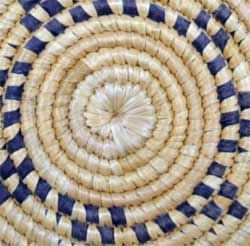 Coiled baskets are made by a basket coiler by starting from one end of a bundle of plant material, wrapping the bundle around itself forming coils, sewing a new coil to the previous one and adding more plant material along the way. They may be decorated with beads, bones, shells, pine cones, feathers, and fibers of all types and colors.
Coiled baskets are made by a basket coiler by starting from one end of a bundle of plant material, wrapping the bundle around itself forming coils, sewing a new coil to the previous one and adding more plant material along the way. They may be decorated with beads, bones, shells, pine cones, feathers, and fibers of all types and colors.
Ancient peoples of Africa made coiled baskets from native grasses and palm tree fibers. Alaska Yupik peoples created baskets from baleen, seal gut and grass. In Europe basket makers used willow, sea bent grass, marram grass, oat straw, and rush. Contemporary crafters still use the same traditional plant fibers abundant in their countries plus various man made materials such as bright colored telephone wire and synthetic cords and threads.
Free Online Pattern Maker
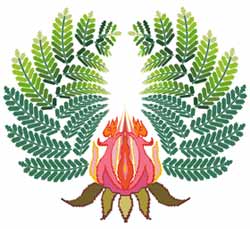
Any picture that you created or saved on your computer may be transformed into a beautiful cross-stitch design. Easy and free online tool is ready for you. Learn more...
Free Embroidery and Needle Painting
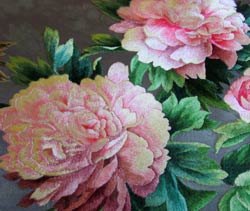
As well as a thousand years ago Chinese silk embroidery is the most valued needlework today. Read more...
Nine Meters of a Masterpiece

The largest cross-stitch project depicted the legendary Grunwald Battle. Read more...